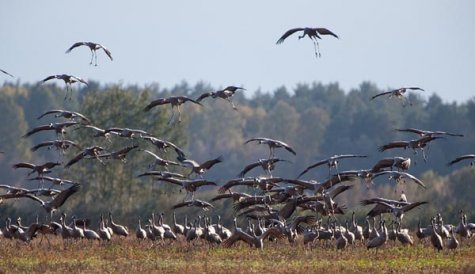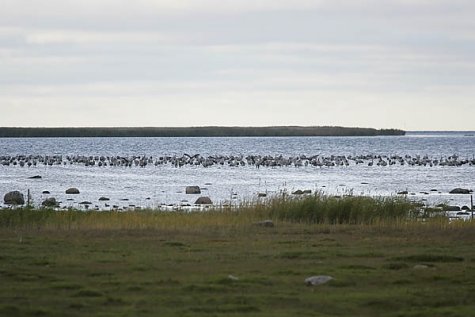Peak period of crane migration (video)
Photos: Arne Ader
Translation: Liis
Cranes
Common crane; Eurasian crane Sookurg Grus grus
In the mornings the crane flocks fly to the feeding grounds and in the evenings back to their peaceful overnight places. In the places familiar to bird fans and photographers thousands can be seen, splendid areas are Saunja bay in the Silma protection area, or Rannajõe and Põgari-Sassi village in Matsalu.
See the video:
The young birds are easily distinguishable in a crane flock (their head plumage is still brown). The long-living birds have raised one-two chicks during the summer nesting perioid. These in turn start a ”make-believe” nesting only in their third year, in early spring – actually they look for a suitable area or are busy with trying to take over a territory. They are not ready for nesting until at 4-5 years of age. How is the nest area fidelity of the young birds? From the cranes with GPS transmitters crane researchers obtain data which in a couple of years’ time can provide generally applicable answers.
On migration stopovers the flocks stop here, and also elsewhere, around a couple of weeks. What migration weather is favourable for cranes? Preferably clear, with weak northerly or easterly wind. Those who leave the great migration gatherings may be in groups of some tens up to a few hundred but some few flocks form bird chains that can stretch to lengths of kilometres. The departure of thousands of cranes and their calls are a powerful display. The next stopover may in favourable conditions not be until half a thousand kilometres away.
Cranes at sea










